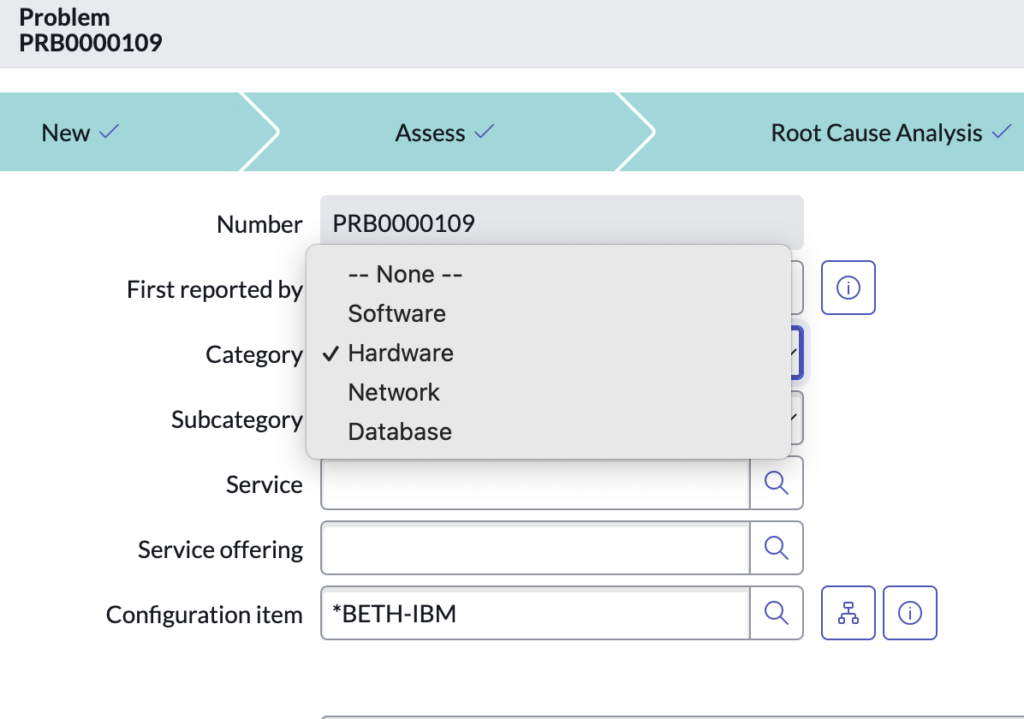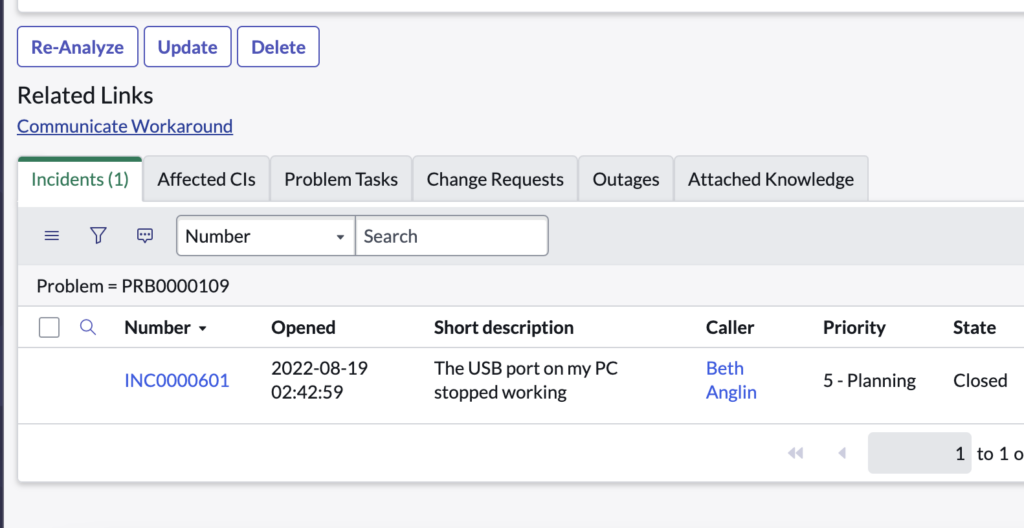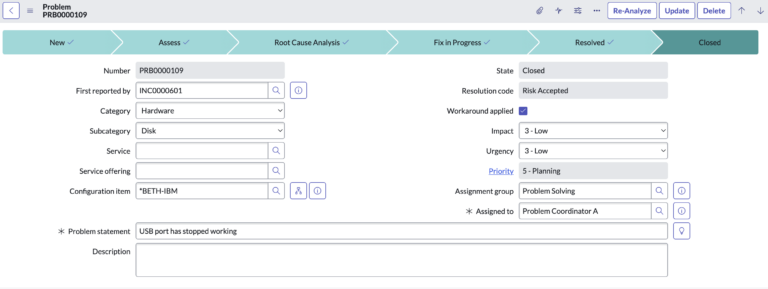What Is Problem Management?
Are you looking to improve your IT Service Management processes?
If so, you should highly consider implementing the Problem Management application.
Most companies are tracking incidents well enough, but do they flow into Problem and Change Management?
Problem management in ServiceNow is a process used to identify and resolve the root cause of incidents that are related to a common issue. When multiple incidents are reported that are related to the same underlying issue, a problem record is created to track and resolve the root cause of the incidents.
The goal of problem management is to prevent incidents from occurring in the first place, or to minimize the impact of incidents that do occur. This is accomplished by identifying the root cause of the problem and implementing a solution to prevent the problem from occurring again in the future.
In ServiceNow, problem management involves the use of a problem record to track and resolve problems. The problem record includes information such as the symptoms of the problem, the cause of the problem, and the resolution of the problem. The problem management process may also involve the use of change management processes to implement necessary changes to the system in order to fix the problem.
So problem management here is ALL about root cause.
Remember that as you review this post.
Overall, problem management in ServiceNow is an important tool for ensuring the stability and availability of a system or application. By identifying and resolving the root cause of problems, organizations can prevent incidents from occurring in the first place, or minimize the impact of incidents that do occur.
This is the second post in a series of 3 posts on understanding IT Service Management. Check out our next post on understanding change management here.
(It probably makes sense to finish this article first, and then move on to change management).
What Types Of Problems Are There?

Problems are usually associated with a category, but this can vary widely.
It depends if an ITIL framework is adhered to or not – which is in our opinion, becoming less and less popular. Companies are now a lot more comfortable not abiding by a strict ITIL framework or ITIL methodology.
In ServiceNow, problem records are used to track and manage issues that have been identified in the organization’s IT systems and services. Problem records are typically classified into the following states:
- Known Error: This category is used for issues that have been identified and for which a workaround or permanent solution has been identified.
- Investigating: This category is used for issues that are being actively investigated in order to identify the root cause and a resolution.
- Pending: This category is used for issues that are waiting on some external factor, such as a vendor or service provider, in order to be resolved.
- Resolved: This category is used for issues that have been resolved and for which a resolution has been implemented.
- Closed: This category is used for issues that have been fully resolved and are no longer being actively worked on.
Overall, the goal of problem management in ServiceNow is to identify, track, and resolve issues in the organization’s IT systems and services in order to minimize disruptions and improve the overall reliability of the systems.
Problems would then roll into changes, to actually deploy the fix that was acknowledged in the problem.
So it goes Incident > Problem > Change.
How Do Incidents And Problems Work Together?

Let’s take a look at problems and how they work with incidents.
In ServiceNow, incidents and problems work together to help organizations track and resolve issues in their IT systems and services.
An incident is a disruption or failure that occurs in an IT system or service, while a problem is the underlying cause of the incident.
When an incident occurs, it is typically logged as an incident record in ServiceNow. The incident record is used to track the progress of the incident and to coordinate the resolution of the issue.
If the incident is caused by an underlying problem, a problem record may also be created in ServiceNow to track and manage the issue. The problem record is used to identify the root cause of the problem and to develop a resolution.
Once the problem has been identified and a resolution has been developed, the resolution is typically implemented through a change request. The change request is used to track and coordinate the implementation of the resolution, and to ensure that it is tested and reviewed before it is deployed.
Overall, the goal of incidents and problems in ServiceNow is to help organizations track and resolve issues in their IT systems and services in order to minimize disruptions and improve the overall reliability of the systems.
Problems And Approvals
Approvals for problems are going to vary widely.
Most companies that I’ve worked for, don’t have approvals connected to problem management.
It is not uncommon for problem management records in ServiceNow to require approvals, particularly for those that involve significant changes to the organization’s IT systems or services.
That being said – it is certainly not mandatory to connect problems to approvals.
Approvals may be required in order to ensure that the necessary resources are available to implement the resolution, to obtain the necessary approvals from relevant stakeholders, or to verify that the resolution meets the necessary standards and guidelines.
The specific approval process for problem management records will depend on the organization’s policies and procedures, as well as the nature and complexity of the issue being addressed.
Remember, the goal of requiring approvals for problem management records in ServiceNow is to ensure that issues are resolved in a controlled and organized way, minimizing the risk of disruptions to the operation of the systems and services.
Problems And Workflows
It’s a good idea to build out an automated workflow around your problem management process.
It is common for problem management records in ServiceNow to have an associated workflow in order to streamline the process of reviewing, approving, and implementing resolutions.
There are major benefits to streamlining this process.
Workflows can be used to automatically route problem management records to the appropriate individuals or groups for review and approval, assign tasks to the appropriate individuals or groups to implement the resolution, and ensure that the resolution is tested and reviewed before it is deployed.
The specific workflow for problem management records will depend on the organization’s policies and procedures, as well as the nature and complexity of the issue being addressed.
You may want to have a few different types, based on the category of the problem.
Workflows for problem management records help to ensure that issues are resolved in a controlled and organized way, minimizing the risk of disruptions to the operation of the systems and services.
Take a look at our next article in the series, where we talk about how change management works.
Let us know if you have any thoughts on problem management below.


[…] is the first post of a 3 article series, where we approach problem management and change management, in more […]